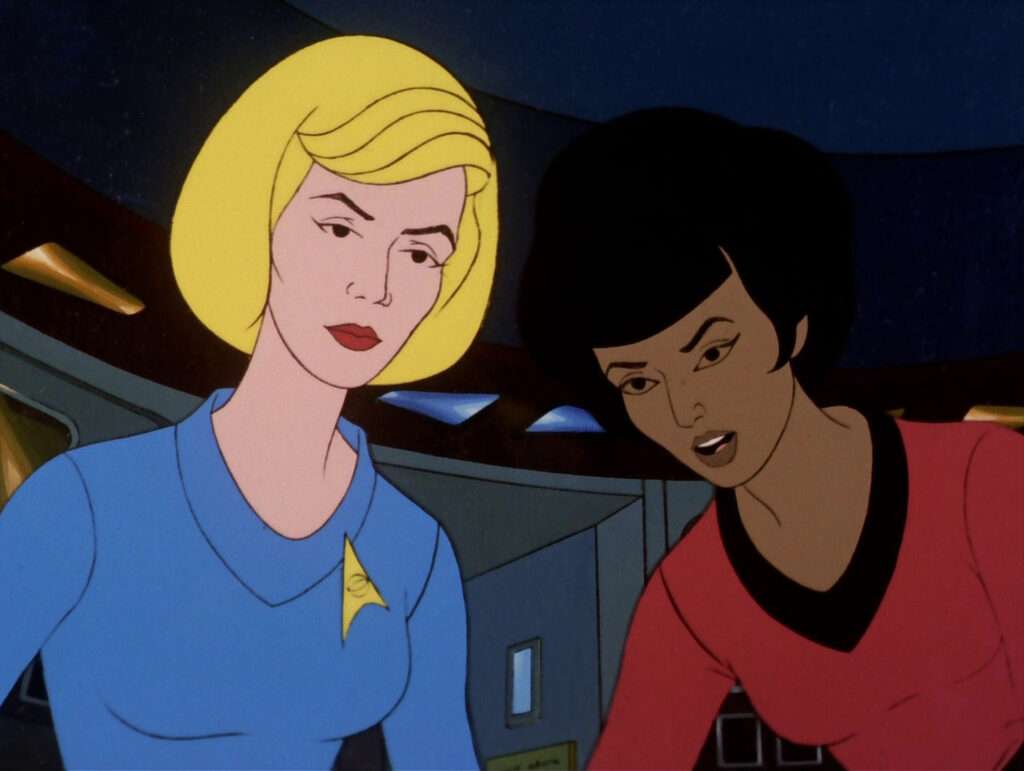 If my legacy is “that weird lady who defends The Animated Series,” so be it. Just like its predecessor, TAS was made on a miniscule budget and it showed. Yet for all the weird color choices—the Barbie movie probably stole some of the pink from the Kzinti—or instances when the same voice actors playing multiple characters had entire scenes where they talked to themselves, it pushed the envelope. It took risks with episodes set on aquaplanets, new alien designs not possible in the physical series, adult storytelling where children learn about the loss of a pet, and even an episode where the very existence of Lucifer himself is called into question. One often forgotten episode, “The Lorelei Signal,” is a hidden gem. It gives Uhura (and Nichelle Nichols) a chance to truly shine without revolving around Black trauma, and shows more women as heroes without demeaning the male crewmembers.
If my legacy is “that weird lady who defends The Animated Series,” so be it. Just like its predecessor, TAS was made on a miniscule budget and it showed. Yet for all the weird color choices—the Barbie movie probably stole some of the pink from the Kzinti—or instances when the same voice actors playing multiple characters had entire scenes where they talked to themselves, it pushed the envelope. It took risks with episodes set on aquaplanets, new alien designs not possible in the physical series, adult storytelling where children learn about the loss of a pet, and even an episode where the very existence of Lucifer himself is called into question. One often forgotten episode, “The Lorelei Signal,” is a hidden gem. It gives Uhura (and Nichelle Nichols) a chance to truly shine without revolving around Black trauma, and shows more women as heroes without demeaning the male crewmembers.
The basic plotline gives Uhura the limelight she truly deserves. As the Enterprise enters a space equivalent of the “Bermuda Triangle,” where Federation, Romulan and Klingon ships have all been reported to have vanished, they encounter a probe that makes the men on the Enterprise start to experience hallucinations and weakness. After beaming down to a nearby planet to investigate, the all-male landing party is captured and each one drained of his life force by the women who inhabit the planet.
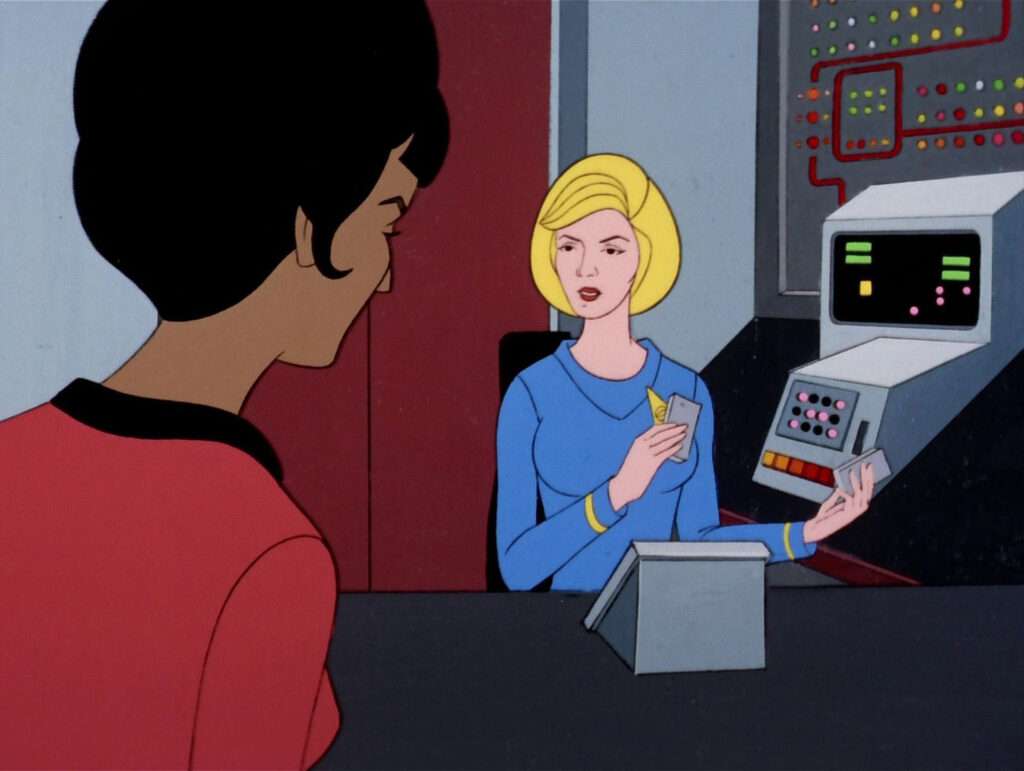
Uhura and Chapel take center stage as they lead a rescue mission of crew women to save Kirk and the others. After Chapel works with a team of women scientists to figure out that the probe is weakening their male colleagues, Uhura takes command of the ship. Then, phasers ready, they storm the planet and Uhura forces the leader, Theela, to surrender the crewmen. Chapel gets Spock back to the ship and they begin working on a solution to restore the men, who are displaying signs of rapid aging, as Uhura demands answers from Theela. Theela reveals how the very planet threatened the lives of her ancestors until the women developed a natural combatant to the environmental factors killing them. Unfortunately, the men did not develop the same survival mechanism and the women had to drain the life forces of any male humanoids who landed on their planet in order to survive. Uhura promises to alert Starfleet and the Federation to provide resources and support until Theela and her peers can live on other planets without having to drain the life from others.
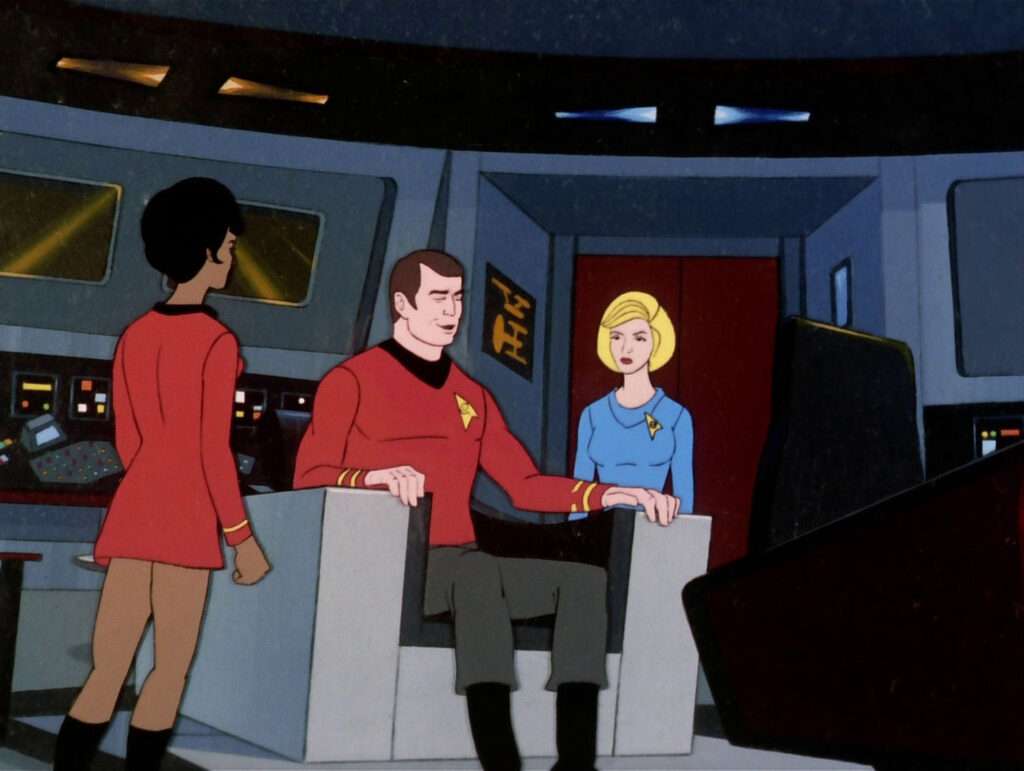
This may sound like a very basic plot—crewmember saves their COs and solve several mysterious disappearances—but it stands out by putting Uhura, the only woman protagonist of color in the crew, in charge and having her rescue the Enterprise crew without losing a crewmember or killing any of the antagonists. That makes Uhura’s only mission of command in TOS and TAS one of the most successful in the entire five year mission. Kirk may have saved his crew multiple times, but he lost many crewmembers. His interventions resulted in the deaths of various alien adversaries, and many of the planets the Enterprise visited may have suffered from unexpected negative consequences of first contact. Even Spock did worse as a commander in the TOS episode “Galileo Seven,” where he struggles to command a mostly-human crew, given his adherence to Vulcan logic and rejection of emotion. In contrast, Uhura stands up to Theela, phaser ready, and no blood is shed, no lives lost. The only casualty of the episode is the urn that Kirk is hiding in, which Uhura phasers). In fact, Uhura helps save Theela and her peers from having to depend on the life forces of male humanoids to survive, thus saving a civilization and helping them live better lives.
Theela’s final comment is her being thankful that Uhura has contacted Starfleet and the Federation, who can help Theela and her peers live normal lives again. This arguably makes Uhura a more effective leader than Kirk or Spock. At no point is her right to command called into question. Chapel merely asks what Uhura is doing and when Uhura explains she’s taking control, Chapel simply follows her orders. Scotty, who technically outranks Uhura, doesn’t fight her taking charge when he’s being affected by the planet. Both of these examples show how much her crewmates respect her ability to command the ship. Even when Spock is recovering, he is merely back up on the Enterprise, Uhura is actively rescuing the others. Kirk isn’t the one who declares the mission done—Uhura is.
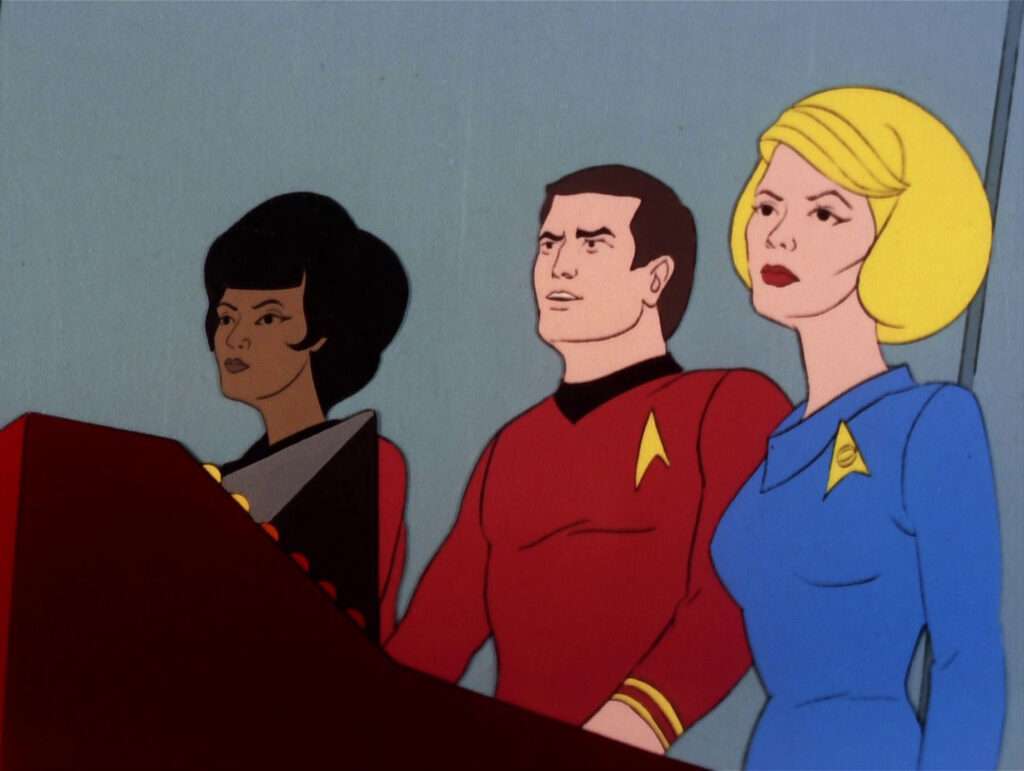
What makes “The Lorelei Signal” one of the unsung treasures of the franchise is how much it gave a previously underserved character like Uhura. Chakoteya.net, a fan produced transcript fansite for all Trek series from TOS to ENT, provides statistics about dialogue and it highlights how even though Uhura was a key crewmember, she often got sidelined. A huge chunk of Uhura’s dialogue across TOS and TAS comes from this one episode alone, where she has more words spoken than in any TOS episodes. While she had many iconic moments in TOS—her refuting Sulu’s ‘fair maiden’ comment in “Naked Time” or challenging Mirror Sulu’s seduction of her in “Mirror Mirror”—these were brief scenes in episodes, not major plot points.
Uhura deserved to take center stage and use her skills as Senior Communications Officer to save the day more often. While the Kelvin timeline movies and series produced after that have included more inclusive episodes and characters of color have more consistent presence throughout their respective series, many of these characters have traumatic experiences that cause them great suffering or undermine their characters. The Kelvin movies introduced a relationship between Uhura and Spock that does not enhance her character, instead portraying her emotionality as a weakness that seems to negatively impact her job. Uhura in Strange New Worlds is now an orphan due to a shuttle accident then raised by her grandmother, a traumatic scenario that writers force characters of color into far too often. Even other women of color in post-Kelvin Trek have backstories and plots that sometimes feel like a trauma bingo card. “The Lorelei Signal” does not introduce trauma or tragedy into Uhura’s story: she takes command and saves lives because she is the best person for the job.
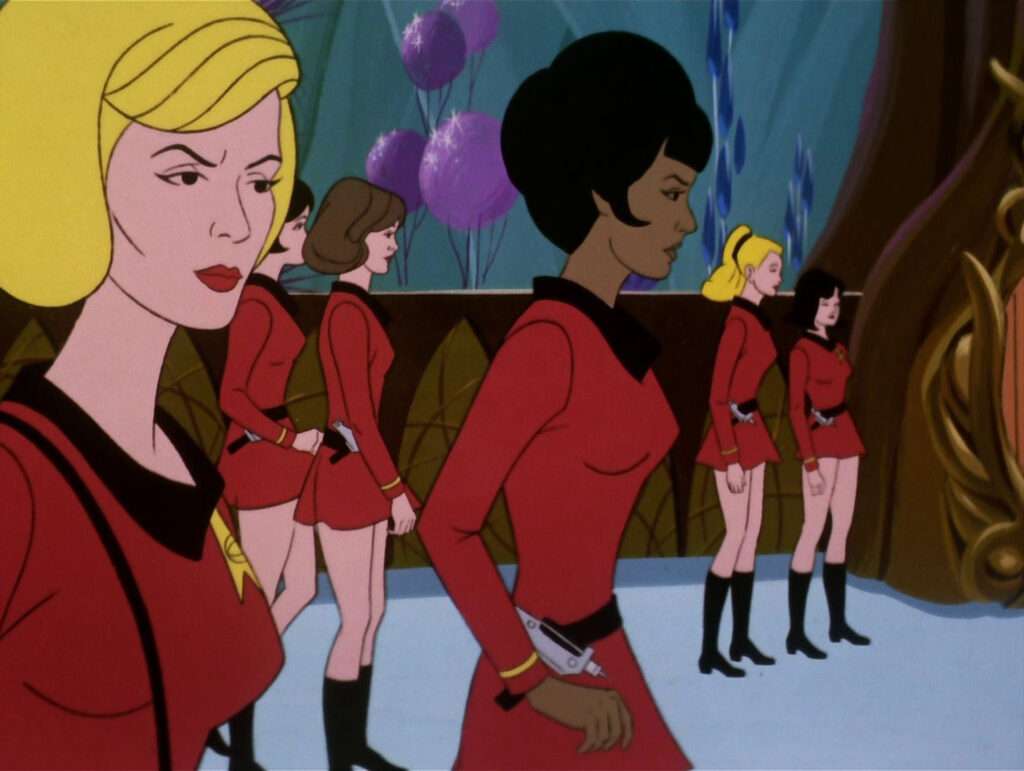
“The Lorelei Signal’ gave Uhura the chance to take command and save her crew without ruining intergalactic relations or adding to the Redshirt Death Toll. She often got forgotten or sidelined in TOS, but this one episode of TAS proved that when well written, Uhura stood as one of the greatest members of Starfleet, whose single mission of command led to saving her crew, an entire civilization, and solving many more disappearances and deaths. May future Trek projects let Uhura be the true legend she deserves to be.